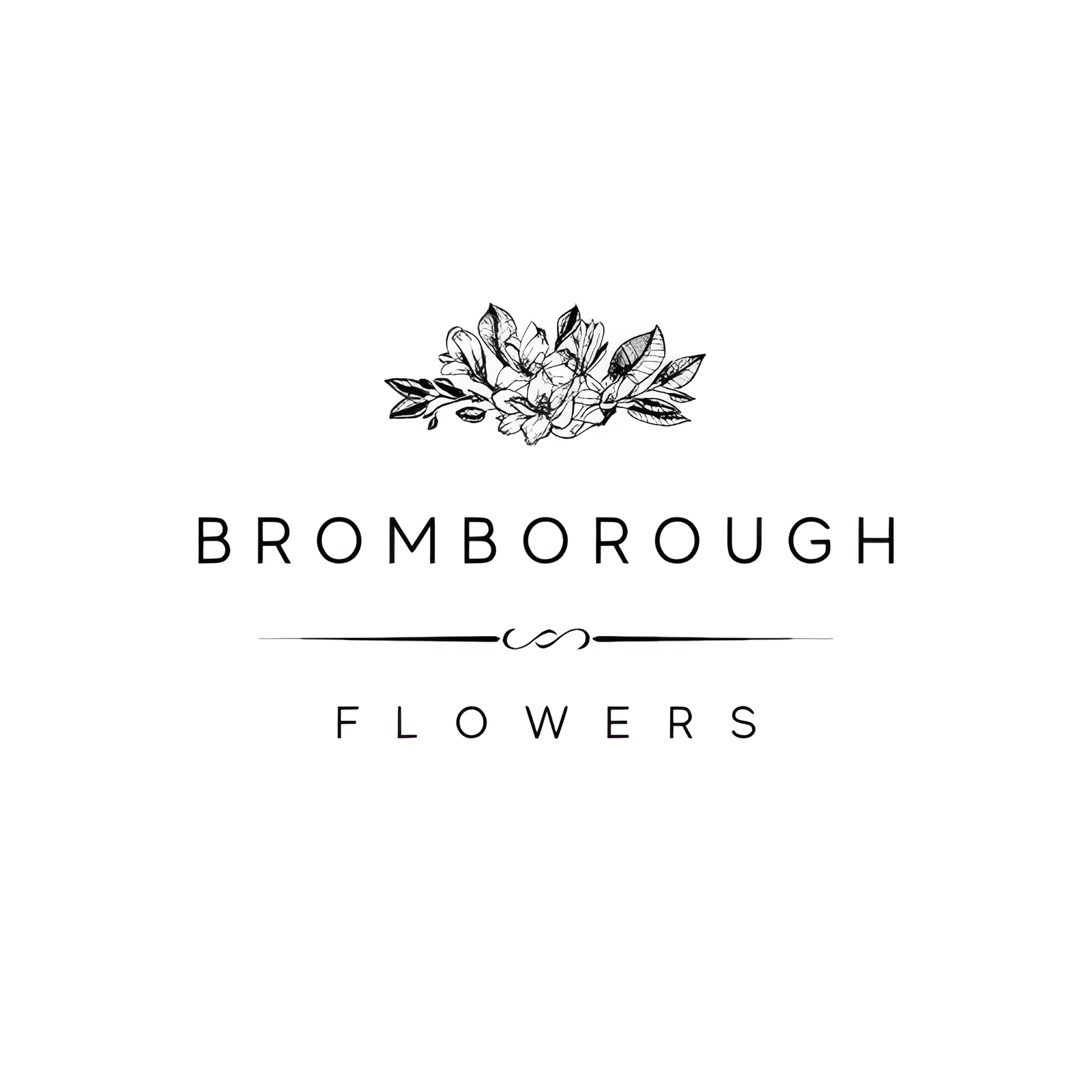When planning a wedding, selecting the right flowers can greatly enhance the event's aesthetic, and Astilbe stands out as a distinguished choice. With its feather-like plumes and soft, airy blossoms, Astilbe offers a unique texture and elegance that is hard to match. Available in a spectrum of colors from soft pinks to deep reds, this versatile flower can complement a variety of wedding themes. But what makes Astilbe truly special, and how can it be best utilized in wedding decor to achieve that ethereal touch brides often seek?
Flower Overview
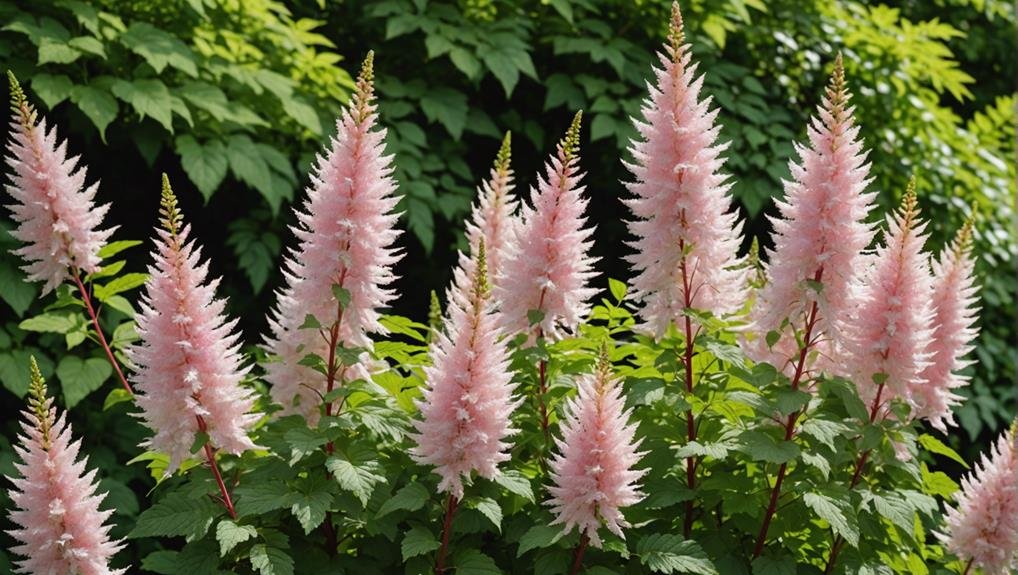
Astilbe flowers are celebrated for their delicate, feathery plumes that rise above lush green foliage, bringing an enchanting and airy quality to any floral arrangement. These blooms are particularly beloved in bridal bouquets, where their light and whimsical nature adds a touch of elegance and sophistication. Astilbe flowers come in a wide array of striking colors, from soft pastels to vibrant hues like soft pinks, peaches, and deep reds, making them versatile enough to complement any wedding color scheme.
Known for symbolizing grace, patience, and refinement, astilbe flowers convey messages of appreciation, understanding, and dedication—qualities that resonate deeply in the context of matrimonial celebrations. Their slender stems and plume-like flowers provide both texture and height, enhancing the visual interest of any bridal bouquet. This versatility allows them to be seamlessly integrated into various floral designs, ranging from rustic to contemporary styles.
Moreover, astilbe flowers have a commendable lifespan with proper care, rendering them a practical choice for events or long-lasting home decor. Therefore, they continue to be a popular selection for creating memorable and enduring floral arrangements for weddings and other special occasions.
Physical Description
Recognized for their distinctive feathery plumes, these flowers feature tiny, delicate blossoms that contribute to their soft and whimsical appearance. Astilbe blooms rise above lush green foliage, creating an enchanting visual contrast.
Each plume consists of numerous small flowers, which collectively add a sense of texture, grace, and lightness to floral arrangements. These delicate blossoms are densely packed on slender stems, making them a versatile choice for adding height and movement to bouquets.
White astilbe, in particular, stands out for its pristine and elegant appearance, making it a favored option for weddings and other romantic celebrations. The white astilbe's ethereal plumes enhance the overall aesthetic of floral designs, bringing an element of sophistication and purity.
The slender, vertical stems of astilbe contribute to their versatility, allowing them to be integrated seamlessly into various types of arrangements, from cascading bouquets to tall, dramatic centerpieces.
In addition to their visual appeal, astilbe flowers are known for their symbolism. They represent grace, patience, and femininity—qualities highly cherished in wedding ceremonies. The combination of their physical attributes and symbolic meanings makes astilbe an exceptional choice for adding a touch of elegance and charm to any wedding décor.
Available Colour Varieties
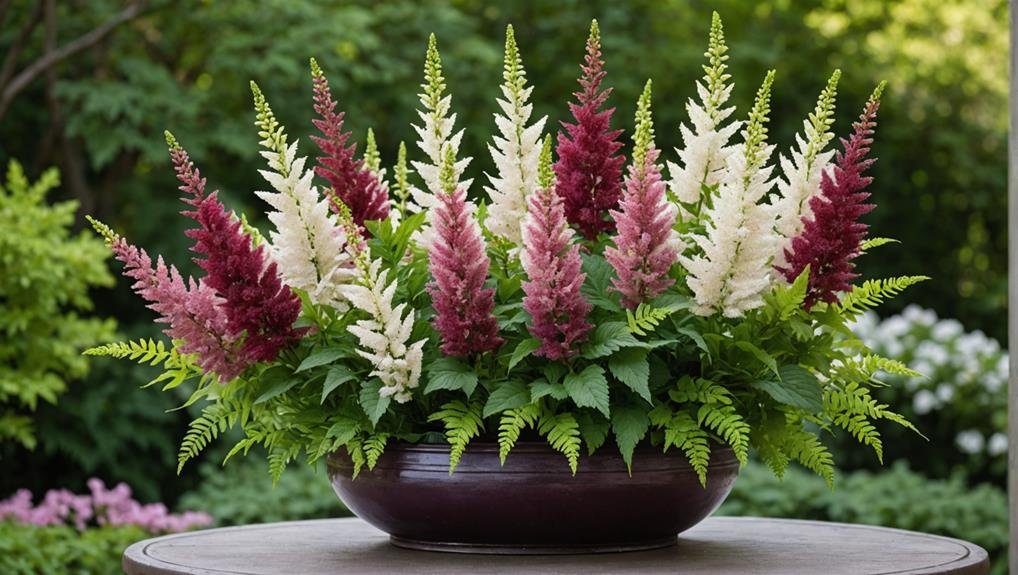
How wonderfully diverse is the color palette of astilbe flowers, offering shades that range from soft pastels to deep, vibrant reds? This remarkable range includes hues such as pink, red, white, lavender, and peach.
Whether you are envisioning a romantic and subtle arrangement or a bold and vibrant display, astilbe's versatile color spectrum provides endless design possibilities for weddings and events.
The vibrant colors of astilbe flowers can elevate any floral arrangement, making them suitable for numerous themes and settings. Soft pastels like pale pink and peach are ideal for creating a gentle, romantic ambiance, while deeper shades such as red and lavender introduce a touch of drama and sophistication.
The pristine white variety is perfect for classic, timeless bouquets and decor.
These radiant colors not only enhance the aesthetic appeal of wedding arrangements but also carry a graceful symbolism, adding an element of elegance and beauty.
For florists and event planners, the diverse color palette of astilbe ensures that every arrangement can be tailored to match the desired mood and style, making astilbe an invaluable addition to any floral design toolkit.
Latin Name and Taxonomy
Intriguingly, the Latin name for astilbe is Astilbe x arendsii, a member of the Saxifragaceae family. This taxonomic classification places astilbe within a genus of approximately 18 species of rhizomatous or fibrous-rooted herbaceous perennials. The genus name, Astilbe, is derived from the Greek words 'a' meaning 'without' and 'stilbe' meaning 'brilliance,' a nod to its striking appearance even in shaded garden areas.
Astilbe is celebrated for its feathery plumes of flowers and luxuriant, fern-like foliage, elements that contribute to its popularity in wedding arrangements and other floral designs. The taxonomy of astilbe underscores its versatility and botanical elegance, making it a favored choice among florists and garden enthusiasts alike.
The family Saxifragaceae includes various other ornamentals, but astilbe stands out for its unique combination of aesthetic and functional qualities. This genus features species with a diverse array of colors and sizes, further enhancing its appeal for customized floral designs.
Understanding the Latin name and taxonomy of astilbe not only enriches our appreciation for this plant but also underscores its horticultural significance and enduring charm in floral artistry.
Geographical Origins

Astilbe flowers, which are native to Japan and China, have a rich history rooted in these Asian regions. These elegant plants were first discovered in the lush landscapes of East Asia, where their delicate plumes and vibrant foliage thrived in the temperate climates. The introduction of astilbe to the Western world is credited to German botanist George Arends, who recognized their potential for ornamental use and began cultivating them extensively.
The geographical origins of astilbe are significant for several reasons:
- Native Habitat: Astilbe plants flourish in the moist, shaded areas of Japan and China, where they are naturally adapted to the local climate and soil conditions.
- Biodiversity: The regions of Japan and China are known for their rich biodiversity, providing a wide array of astilbe species, each with unique characteristics.
- Cultural Significance: In their native lands, astilbe has been appreciated for centuries, not just for their beauty but also for their symbolic meanings in various cultural practices.
- Hybridization: The native varieties from China and Japan have been extensively hybridized, resulting in popular cultivars like Rheinland, Dwarf Chinese Astilbe, Fanal, and Sprite, each offering distinct ornamental features.
Understanding the geographical origins of astilbe helps appreciate their unique qualities and the historical journey that brought them to prominence in modern horticulture.
Season Availability
With its peak blooming period from late spring to early summer, astilbe is an ideal choice for weddings during this time. This seasonal availability aligns perfectly with popular wedding dates, providing fresh and vibrant blooms for floral arrangements.
Typically, astilbe reaches its peak in June and July, although availability can vary based on geographic location and climate conditions.
Different astilbe varieties offer slightly varying blooming periods, allowing for some flexibility in wedding planning. For instance, some varieties may bloom earlier in late spring, while others may extend into early summer. This range of blooming times ensures that astilbe can complement a variety of wedding dates and themes.
Understanding the season availability of astilbe is essential for couples and florists when designing wedding bouquets and centerpieces. Its timely bloom allows it to blend seamlessly with other seasonal flowers, enhancing the overall aesthetic of wedding décor.
The versatility of astilbe's seasonality makes it an excellent choice for creating harmonious and visually appealing floral arrangements. By recognizing the best blooming periods of astilbe, brides and grooms can make informed decisions to guarantee their wedding flowers are at their most beautiful.
Growing Conditions
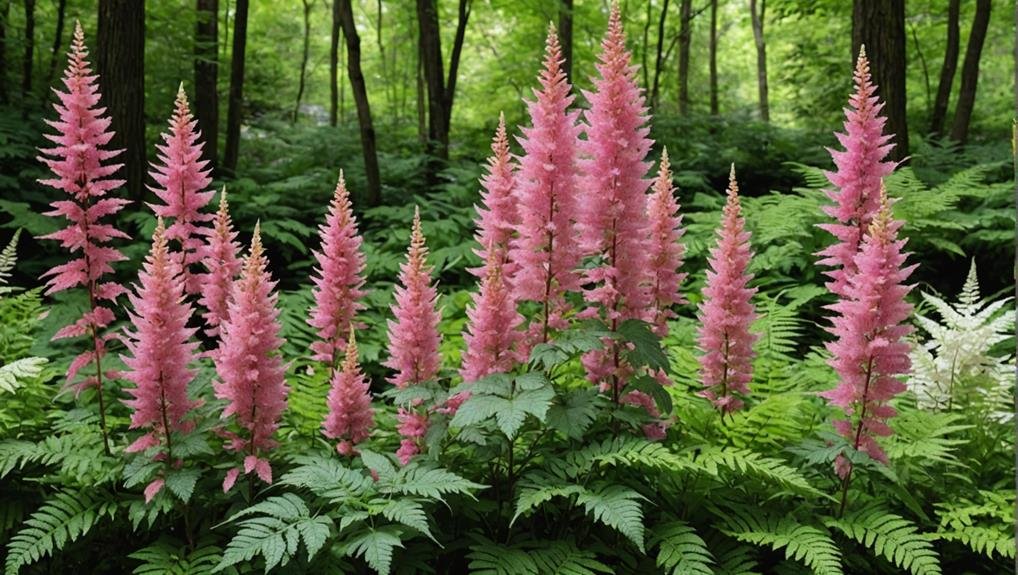
Understanding the season availability of astilbe naturally leads us to explore the ideal growing conditions required for these elegant blooms to thrive. Astilbe blooms are known for their delicate, feathery plumes and thrive under specific environmental conditions that ensure their best growth and visual appeal.
To cultivate astilbe successfully, consider the following essential conditions:
- Light Requirements: Astilbe thrives in light to moderate shade, making it ideal for gardens with partial shade. Excessive direct sunlight can scorch the leaves and diminish the vibrancy of the blooms.
- Soil Quality: Well-drained soil that is rich in organic matter and slightly acidic is essential for astilbe. Incorporating compost or peat moss can improve soil quality, ensuring the roots receive sufficient nutrients.
- Moisture Levels: Astilbe performs best in regions with moist or wet soil. Consistent moisture is necessary, particularly in the South and warm inland West. Mulching can help retain soil moisture and protect against temperature fluctuations.
- Maintenance: While astilbe is generally pest-free and low-maintenance, removing spent plumes can enhance the garden's visual appeal. However, leaving them standing can add winter interest and structure to the garden.
Cultural Significance
Renowned for its symbolic representation of promise and dedication in love, astilbe plays a significant role in wedding traditions and romantic celebrations. This delicate yet resilient flower is often chosen for wedding bouquets due to its meaningful connotations and aesthetic appeal. Its vintage hues and strong stems make astilbe an ideal choice for creating intricate floral arrangements that convey emotions of appreciation and understanding.
Astilbe's graceful symbolism extends beyond mere appearances. Representing femininity and patience, it enhances the allure of bridal bouquets, adding a touch of elegance and depth to the composition. The flower's enduring beauty and longevity further contribute to its practicality in wedding settings, ensuring that arrangements remain stunning throughout the event.
Furthermore, astilbe's versatility as a design element cannot be overstated. Its unique texture and height add visual interest and movement to floral arrangements, transforming them into dynamic works of art. The softness and subtlety of astilbe flowers make them a perfect complement to other blooms, enriching the overall aesthetic without overpowering the composition.
Typical Use in Weddings
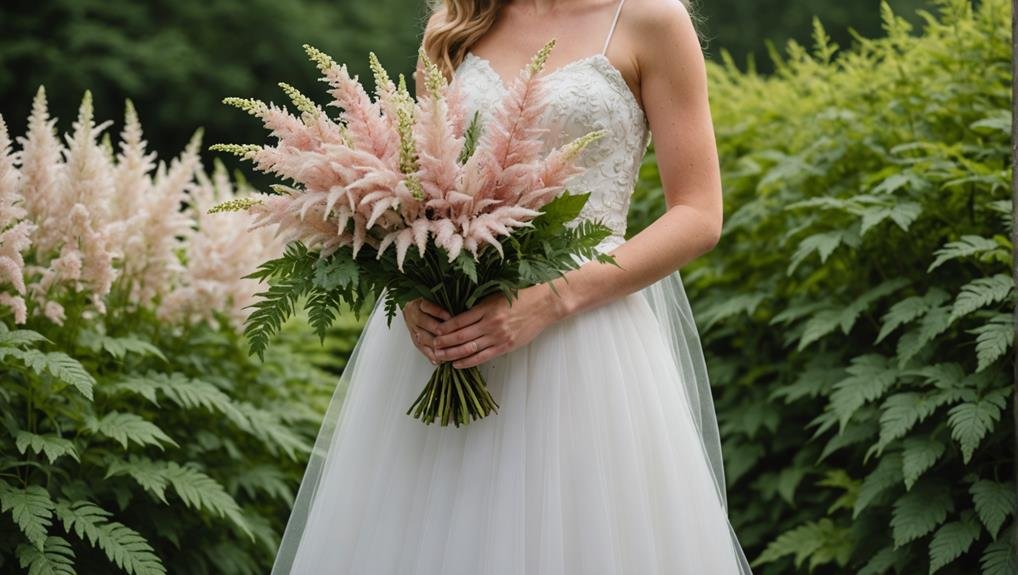
Incorporating astilbe into wedding decor brings a delicate and romantic touch to bouquets, centerpieces, and other floral arrangements. Known for its feathery plumes and variety of colors, astilbe is a versatile flower that enhances the aesthetic appeal of wedding settings. Its symbolism of promise, dedication, and femininity makes it a fitting choice for such a significant occasion.
Astilbe can be seamlessly integrated into various elements of wedding decor:
- Bridal Bouquets: Astilbe adds texture and elegance, pairing beautifully with peonies and roses to create a visually harmonious and sophisticated bouquet.
- Centerpieces: Whether in tall vases or low arrangements, astilbe provides an airy and romantic feel, perfect for enhancing the ambiance of reception tables.
- Boutonnieres and Corsages: The delicate plumes of astilbe make for charming and understated accents, ideal for complementing the attire of the wedding party.
- Arches and Aisle Decor: Astilbe can be woven into arches or arranged along the aisle to create a dreamy, ethereal setting for the ceremony.
Alternative Flower Types
While astilbe is a charming choice for wedding decor, exploring alternative flower types like anemone, amaryllis, anthurium, and aster can offer unique and meaningful floral arrangements.
Anemones, with their delicate petals, symbolize anticipation and protection, making them a poignant addition to bridal bouquets. Their striking appearance can be complemented by using them as a focal point or filler flower in larger arrangements.
Amaryllis, known for its festive appeal, provides a bold statement with its large, trumpet-shaped blooms. Its vibrant colors can bring a sense of celebration to any wedding setting.
Anthurium, also referred to as laceleaf, offers a variety of species native to the Americas. Its heart-shaped leaves and exotic look can add a tropical flair to floral designs, making it a versatile choice for modern weddings.
Aster, an ancient bloom, symbolizes love, patience, and elegance. Available in various colors, asters can convey specific emotions and enhance the overall aesthetic of wedding arrangements. Their star-like flowers serve as excellent filler flowers, adding texture and depth to bouquets and centerpieces.
